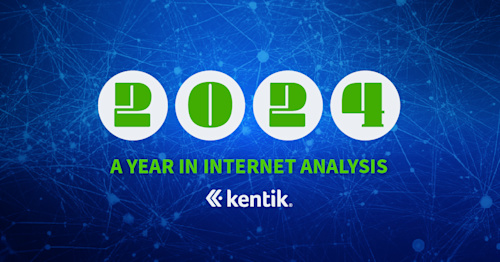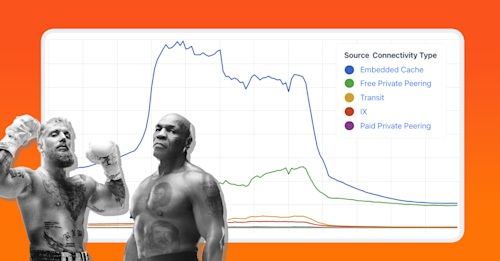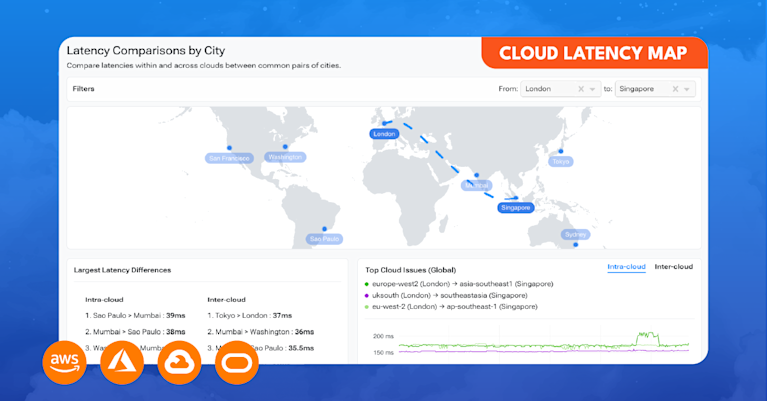Anatomy of an OTT Traffic Surge: Netflix Rumbles Into Wrestling

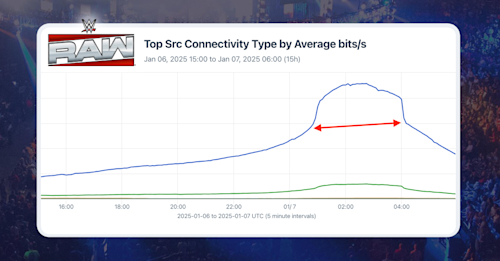
Summary
On Monday, Netflix debuted professional wrestling as its latest foray into live event streaming. The airing of WWE’s Monday Night Raw followed Netflix’s broadcasts of a heavily-promoted boxing match featuring a 58-year-old Mike Tyson and two NFL games on Christmas Day. In this post, we look into the traffic statistics of how these programs were delivered.
On Monday evening, Netflix made its latest stride into live streaming with its exclusive broadcast of WWE’s Monday Night Raw. With this latest event, Netflix continues its charge into live programming in recent months following its broadcasts of the NFL on Christmas Day and the Mike Tyson versus Logan Paul spectacle fight.
The following post is part of our Anatomy of an OTT Traffic Surge series and the latest in our ongoing coverage of streaming giant Netflix. Here, we compare the three recent OTT events and how we saw the traffic delivered.
OTT Service Tracking
Kentik’s OTT Service Tracking (part of Kentik Service Provider Analytics) combines DNS queries with NetFlow to allow a user to understand exactly how OTT services are being delivered — an invaluable capability when trying to determine what is responsible for the latest traffic surge. Whether it is a Call of Duty update or the first-ever exclusively live-streamed NFL playoff game, these OTT traffic events can put a lot of load on a network and understanding them is necessary to keep a network operating at an optimal level.
The capability is more than simple NetFlow analysis. Knowing the source and destination IPs of the NetFlow of a traffic surge isn’t enough to decompose a networking incident into the specific OTT services, ports, and CDNs involved. DNS query data is necessary to associate NetFlow traffic statistics with specific OTT services in order to answer questions such as, “What specific OTT service is causing my peering link with a certain CDN to become saturated?”
Kentik True Origin is the engine that powers OTT Service Tracking workflow. True Origin detects and analyzes the DNA of over 1000 categorized OTT services delivered by 79 CDNs in real time, all without the need to deploy DPI (deep packet inspection) appliances behind every port at the edge of the network.
Advanced edge optimization strategies for network engineers, planners, and peering pros
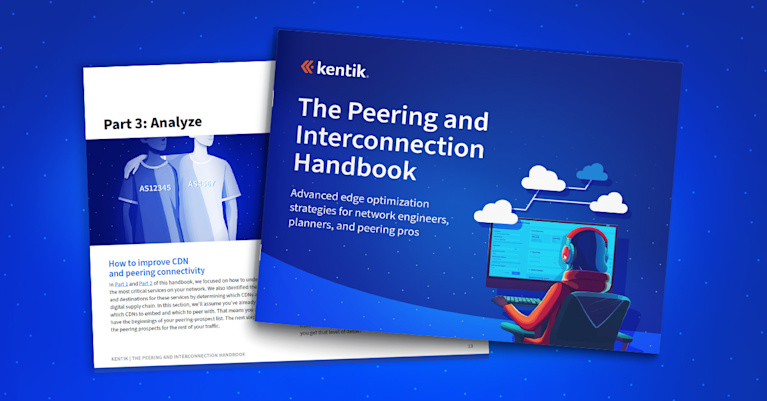
A redemption arc
Having those explanations out of the way, let’s talk about the content delivery. Perhaps the most memorable aspect of last year’s Tyson-Paul fight was Netflix’s difficulties in delivering the broadcast, which was plagued by buffering and disconnections for many viewers, including myself.
The graphic below comes from my post from November following the bout. Those jagged plotlines during the surge of traffic were unusual and appeared to indicate some of the delivery problems that Netflix experienced.
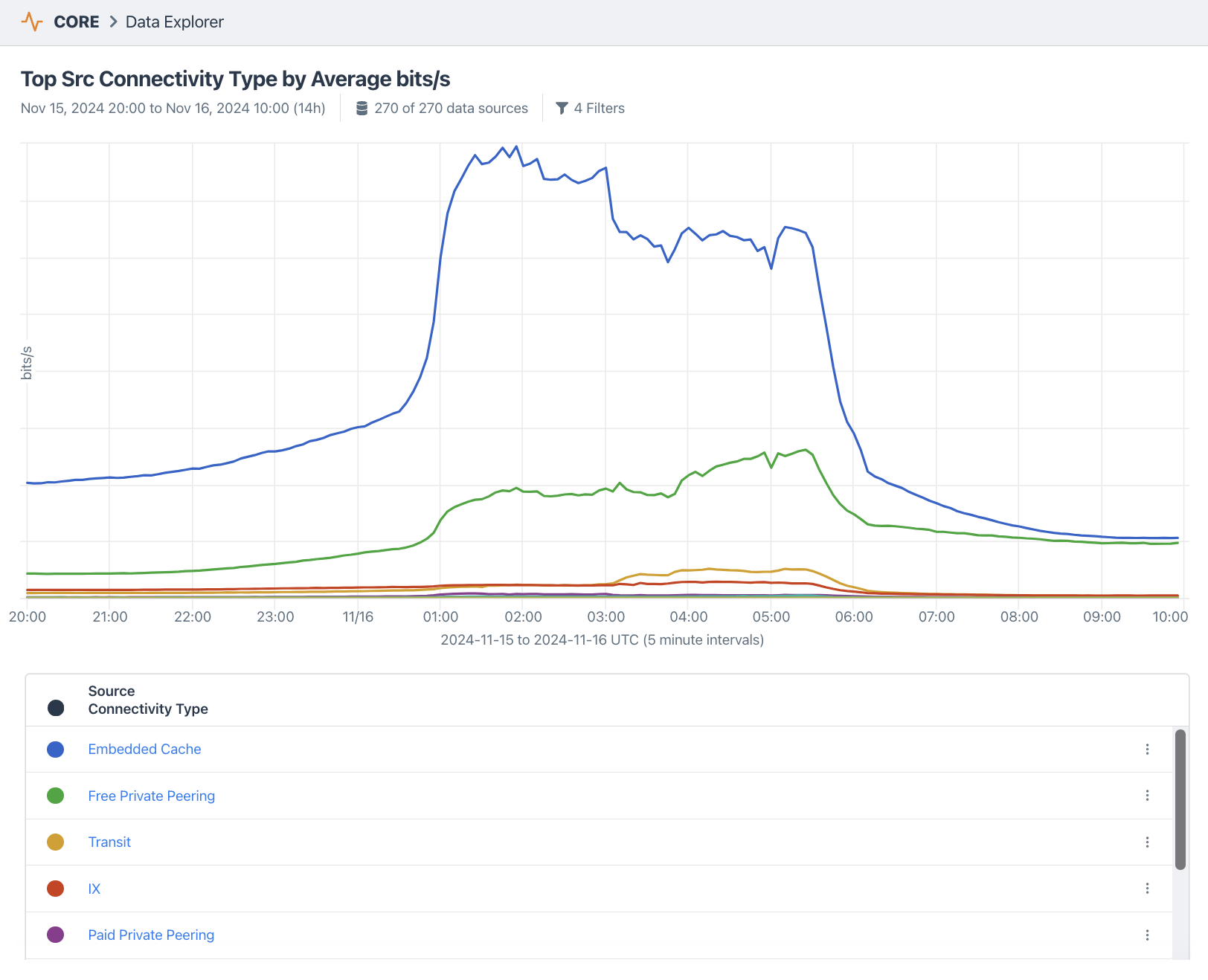
The big question coming out of the event was whether Netflix could shore up its infrastructure to avoid a repeat of these delivery problems on Christmas Day when the streaming service would, for the first time ever, air two NFL games. Fortunately for football fans, those games were streamed without a hitch.
The surge of traffic from the Christmas Day NFL games is illustrated below, where it is broken down by source connectivity type (e.g., embedded cache, peering, transit). There is even a small dip in the middle as viewers tuned away during the break between the two games. Based on data from our OTT customers, 89.9% of the traffic (bits/sec) of Netflix traffic during the NFL games came from embedded caches.

So, did Netflix resolve its delivery issues between mid-November and Christmas? Maybe. One thing that is very important to note is that the viewership from the Tyson-Paul fight was stratospheric — significantly higher than the NFL games.
Netflix claimed to have achieved 108 million live viewers globally, including “65 million concurrent streams (globally), with 38 million concurrent streams in the US.” Perhaps those figures should come with an asterisk if many of those viewers were unable to watch the program like I was. Regardless, the Tyson-Paul fight was a spectacle that drew many millions of onlookers around the world.
And while the NFL is the top sports attraction in the US, it garnered a relatively smaller audience than the fight. A mere 30 million viewers caught the games on Christmas Day, according to Netflix’s published figures. That jives with our data where we observed the Tyson-Paul fight lead to more than double the traffic during the NFL games.
From the top rope, here comes Netflix
That leads us to this week’s development: Monday Night Raw on Netflix.
Unlike the NFL games which occurred midday, the pro wrestling flagship program aired in primetime amid the peak of household streaming. Regardless, the surge of Netflix traffic is easy to spot in the illustration below, which shares the 15-hour time range as the previous traffic graph (15:00 - 06:00 UTC).
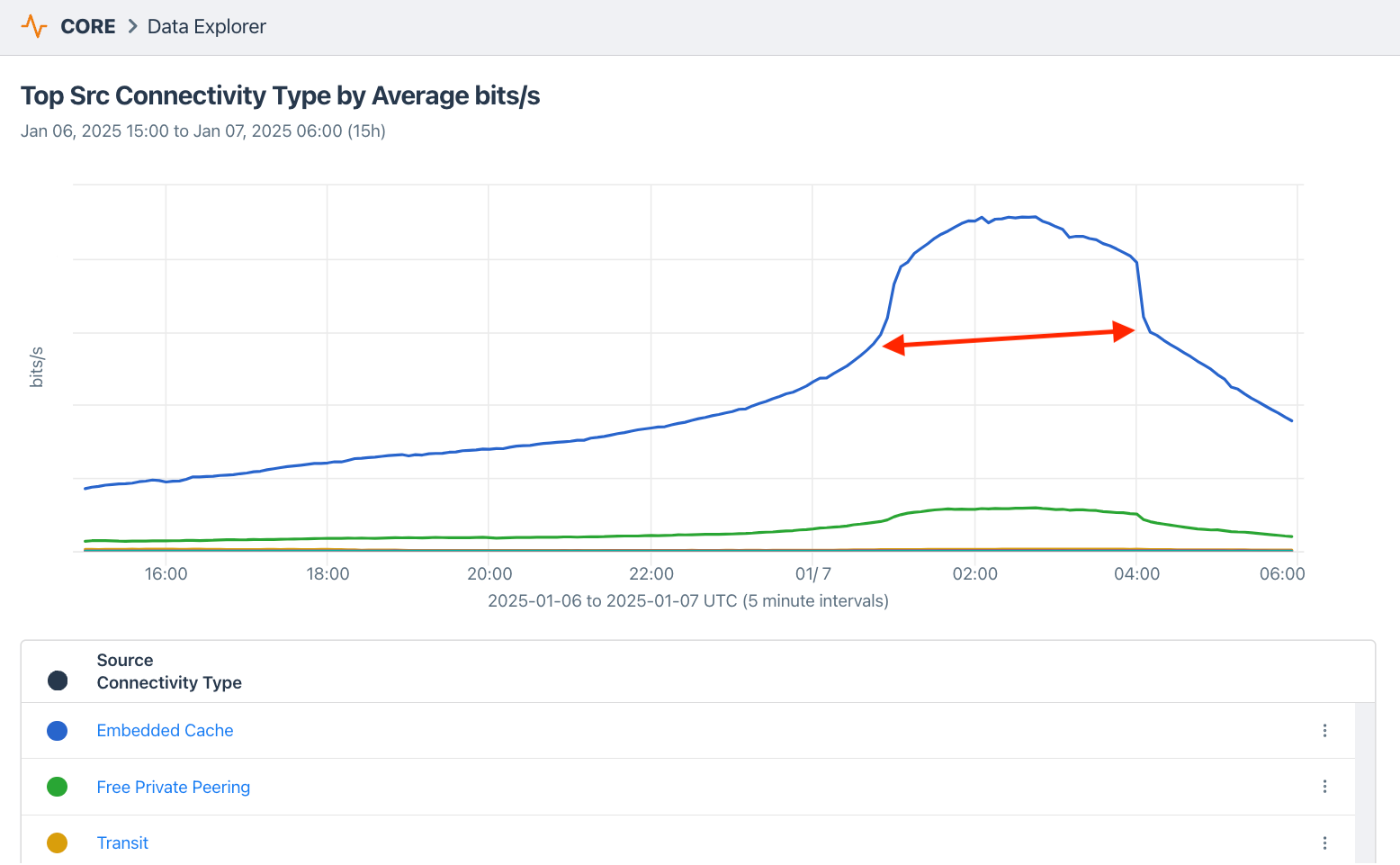
Like the NFL games, the WWE event was primarily delivered through embedded cache (87.9%). However, based on our traffic data, Monday Night Raw clocked in at less traffic, 28% less in bits/sec, to be specific.
The lower level of traffic might be explained by the fact that the wrestling program aired on a Monday evening while the NFL games aired on Christmas Day when many people were home from work with the TV on.
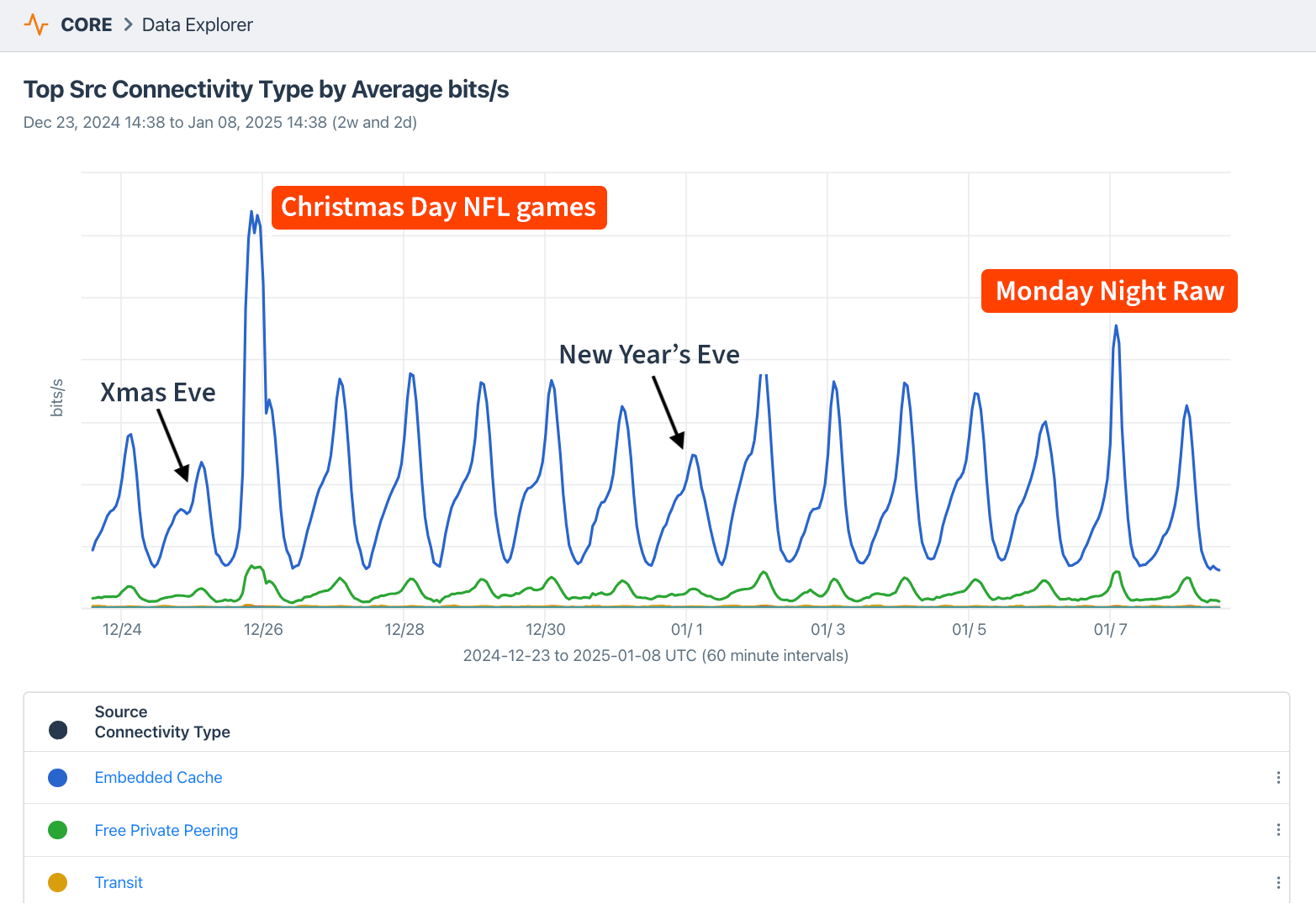
Still, it remains an open question as to whether Netflix can, even today, deliver a problem-free stream of an event on the scale of the Tyson-Paul fight with two to three times the viewers of an NFL game. If Netflix keeps doing more live events, perhaps we’ll again bump up against those limits.
Conclusion
Our OTT Service Tracking workflow allows providers to plan and execute what matters to their subscribers, including:
- Maintaining competitive costs
- Anticipating and fixing subscriber OTT service performance issues
- Delivering sufficient inbound capacity to ensure resilience
Major traffic events like the ones mentioned in this post can have impacts in all three areas. OTT Service Tracking is the key to understanding and responding when they occur. Learn more about the application of Kentik for subscriber intelligence.
Ready to improve over-the-top service tracking for your own networks? Get a personalized demo.
